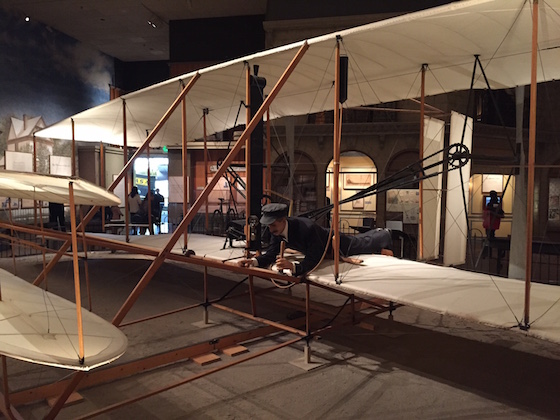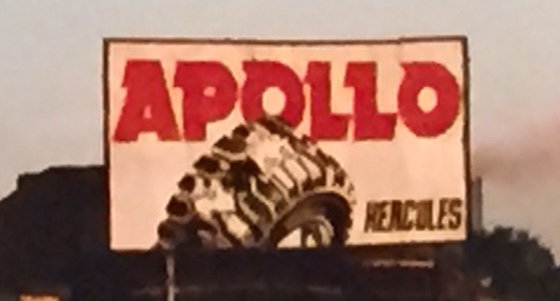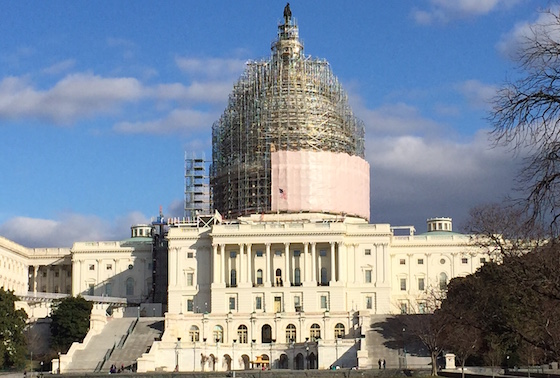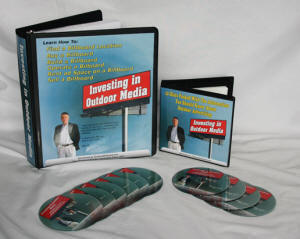Memo From Frank
I just watched someone build a new wooden billboard near my home in rural Missouri. It’s a typical wooden billboard with telephone poles and plywood faces. And the ad space is already rented and the vinyl ads have been hung. It cost probably around $4,000 to build that sign, and the hospital and restaurant advertisers are probably paying around $4,000 per year in rent. When you take out the costs of ground rent and other items, the sign makes around $3,000 per year in net income, for an impressive return level of 75%. Compare that to the other investment vehicles out there. That’s nearly 8 times more than the stock market has done over the past year, and 75 times more than a CD produced. In fact, the return on investment on billboards is one of the highest of any option out there. You can build a decent retirement fund out of around ten of them, and you would need a million dollars in the bank to come close to the same yield. The billboard is one of the most misunderstood financial options out there.
How To Get Your Billboard Company Off The Ground

The Wright brothers had a goal to achieve human flight. Coming from a small town in Ohio, this dream seemed impossible to the average person, but within a matter of years they had created the first airplane, and human flight was attained. If the Wright brothers could achieve flight, then your goal of building a billboard company does not seem that tough, right?
Have a realistic goal
All that the Wright brothers had for an initial goal was to be able to take off and fly. They did not initially dream of building the world’s largest airline. It is often harmful to set too lofty an initial goal for yourself. When I got into the business, my goal was only to own 10 billboards. That’s all I wanted. Ten and I was done. But then, after I hit that goal, I raised my goal to 20, then 30, then 40, and it just kept growing. But I would have been perfectly happy if I had only been able to hit ten signs and not a single sign more. Of course, it would have probably not been my full-time job in that instance, but just a really, really profitable additional source of income.
Map out the steps to hit that goal
A goal is nothing without a solid business plan of how to hit that goal. And a good business plan is a mixture of realism, risk hedging, optimism and pessimism all rolled into one – you need to have a best case, worst case and realistic case scenario, with the correct Plan B’s to mitigate whatever might go wrong. A good business plan has every action step spelled out in complete detail, with a timetable to get that step completed. For example, if you are going to build billboards in Oklahoma, you need in your plan such items as getting your Oklahoma Outdoor Advertising License, with a timetable of all the steps required to do so. Another early aviator, Charles Lindbergh, had a goal of crossing the Atlantic. So did many others, and they all crashed and died in the attempt. But Lindbergh succeeded because he had a complete map of every step required of the 33 ½ hour flight, as well as a backup plan on anything that went wrong.
Never give up regardless of the road blocks
Persistence is the key to success in starting a business. Roughly 90% of all small businesses fail. The 10% that succeed all share in common a founder that would not give up. Henry Ford once said “if you think you will succeed or fail, you’re right”. If you are not 100% on-board with commitment to getting your billboard company off the ground, then don’t do it. But if you are willing to promise yourself that, no matter what, you are going to succeed, then the odds are definitely in your favor.
Think big – but with a Plan B
Many people work best under a framework in which they constantly think about the end of the movie first – basically dangling their own carrot. That’s called the “best case” scenario, with the “what if” scenario of hitting all of your goals perfectly. But that’s not always what happens. So be ready for the typical bumps in the road like economic recessions, bank failures, interest rate fluctuations, all the things that are a part of real life. Be ready to head down paths other than your main goal, in case you need to maneuver to adjust to the problems that come up. You basically keep moving forward, but maybe not 100% in line with how you thought it would go. Many great companies ended up with a different roadmap than they originally planned, and ended up much better as a result. Look at Apple. Steve Jobs originally was making circuit boards for computer nerds at swap meets. He never dreamed that he would go from a garage to the most valuable tech company in the world.
Don’t listen to your critics – have faith in yourself
Any time you start a new venture, there will be those that tell you you’re crazy or stupid to do so. Look at the credentials of anyone who gives you advice. Most of those “naysayers” have never started a business in their entire life. If they have never done so, who are they to give you advice? It always amazes me that people who hold normal 9 to 5 jobs think they have expertise in spotting opportunity. IF they are so smart, then why do they work for someone else? The bottom line is that you should never listen to anyone who is not qualified to offer you the correct feedback. Otherwise, you’re like someone who, instead of going to the emergency room with a pain in their side, simply ask random people on the street their opinion and then fall over dead of an appendicitis.
Conclusion
Starting a business is like having a baby. It’s exciting and nerve racking at the same time. It offers a priceless experience and huge rewards, but also a host of potential problems if you have not planned ahead. There is nothing that can hold you back from your destiny, if you really, really want it and are willing to fight for it. When I started out with one sign, I never dreamed I would get to 300 signs, both in Dallas/Ft. Worth and Los Angeles. But I just knuckled down and did it. You can, too.
Billboards Are Not Just A U.S. Industry

I saw this photo at a museum in Washington, D.C. It’s a billboard somewhere in Latin America. The U.S. is not the only country that has a billboard industry. But it’s the only country where billboards are a big deal. That’s because the other countries either outlaw signs altogether, or have no government regulation. And it’s the government regulation that makes the industry work. Real the following article to learn how that works exactly.
New Billboards For Sale On OutdoorBillboard.com
How The U.S. Government Accidentally Made The Billboard Industry Great -- And Why They Can’t Take That Away

In the beginning, there were no billboard regulations in the U.S. Any advertiser could build their own sign anywhere they want. They were literally nailing signs to trees. Because there was no limitation to where you could build billboards, they had little value. Nobody would rent a sign from a billboard company because they could just build their own. The economic principal of supply/demand says that in no regulation of supply, there is no value to an asset. So the billboard industry was nothing without regulation that restricted supply.
The Highway Beautification Act was the best thing that ever happened to the U.S. billboard industry
Ladybird Johnson, the wife of then-President LBJ, was concerned that billboards would be built in front of her ranch near Austin. So she spearheaded government control of where billboards could be located. Under the Highway Beautification Act, billboards could not just be randomly built wherever an advertiser elected. Instead, they could only be placed in certain zonings and spacings. This law stands as the birth of the modern billboard industry. In the absence of this regulation, signs would have no value.
Being a regulated industry is great in the U.S.
There have only been three regulated industries in U.S. history: 1) trucking 2) airlines and 3) billboards. Each industry flourished under regulation. The profits for the trucking and airline industry were at their peak when those industries were regulated. And why not? The regulations eliminated competition and allowed rates to be sky-high.
But it’s not great if they take it away
The U.S. government later retracted their regulation of the airline and trucking industry, due to anti-trust concerns and complaints that it kept prices too high. If you look at trucking and airline regulation, the truth is that the government did it to artificially bolster profits to “jump start” the industry, and then, once they got the industry going, dumped the regulation to lower consumer prices. Why not? That’s a smart move for them (but not really ethical).
They can’t de-regulate the U.S. billboard industry, however
The whole point of deregulation of the airline and trucking industries was to create more trucks and airplanes and lower consumer prices. In the case of the billboard industry, however, the last thing they want is to increase the number of billboards in the U.S. so how can you de-regulate the industry and not have more billboards built? The answer is, you can’t. And just to remind the government of this, lobby groups such as Scenic America proactively push to keep billboards limited. And why can’t the government just eliminate them? It’s not that easy. To remove a billboard, the government has to pay the owner fair market value. And stopping the construction of new signs may be illegal under laws of free speech and other mandates. The government is basically stuck.
Conclusion
It’s the government regulation that makes the U.S. billboard industry great. Our billboards are built no differently than those of other countries. They are no bigger or more prominent. But the U.S. government ensures our profitability through industry regulation.
Billboard Home Study Course
![]() How to Find a Billboard Location
How to Find a Billboard Location
![]() How to Buy a Billboard
How to Buy a Billboard
![]() How to Build a Billboard
How to Build a Billboard
![]() How to Operate a Billboard
How to Operate a Billboard
![]() How to Rent Ad Space on a Billboard
How to Rent Ad Space on a Billboard
![]() How to Sell a Billboard
How to Sell a Billboard
Get Your Copy Now!
The Market Report
Prices Are Delayed By At Least 15 Minutes
